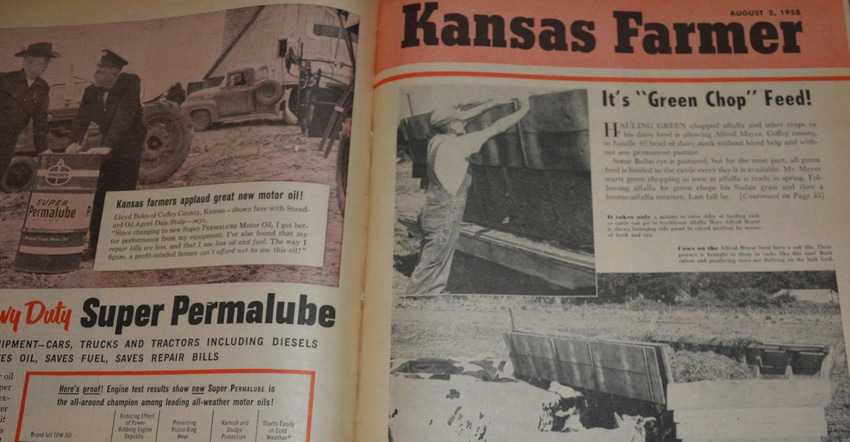July 2, 2018

Back in August of 1958, 60 years ago, Kansas dairymen were discovering the advantages of “green chop” crops to reduce the need for permanent pasture.
Alfred Meyer of Coffey County was hauling feed to his 40 head of dairy cows on a daily basis. He started by green chopping his alfalfa at the first opportunity of the spring, followed by green chopping sudan grass and then, later in the season, a brome-alfalfa mixture.
Meyer said it took him only about 30 to 40 minutes a day to prepare enough feed for his dairy herd. He was also experimenting with putting some of his first cutting of alfalfa into a silo and completing the silo fill with fall crops later in the season.
100 Years Ago
The importance of educating young people to work in agriculture was not lost on the federal government of 1918. One hundred years ago, the government had a new program designed to train farm boys so they would be well-equipped to be the next generation of farmers.
Kansas received a federal grant of more than $12,000 to help pay the salaries of teachers who would both train students and engage in vocational agriculture projects.
70 years ago
Conservationists were urging farmers to plant windbreaks to help shelter farmsteads and gardens from the Kansas winds. Fast-growing Chinese elms were a favorite with many farmers who wanted a quick answer to protecting tender garden crops from strong, hot winds.
50 years ago
Stubble mulching wheat fields after harvest was gaining popularity in August of 1968, with farmers making the discovery that the conservation practice helped the field store as much as 30% more moisture than a field that was clean followed.
Stubble mulching was also shown to help protect the topsoil from wind and water erosion during the summer months.
20 years ago
Kansas wheat farmers were trying to the beat the odds of a disease of weather event adverse to one variety of wheat by planting a blend of seed, rather than a single variety.
One of the farmers trying that approach was Bob Kibbe of Randall who said he was planning to blend seed on all fields except those for seed wheat.
He told Kansas Farmer that he and his brother, Jim, planted Mankato, Tomahawk and 2137 on upland soil and Jagger, 2163 and 2137 on their better bottomland and fallow ground.
Goerzen is executive director of Old Cowtown Museum in Wichita.
About the Author(s)
You May Also Like




